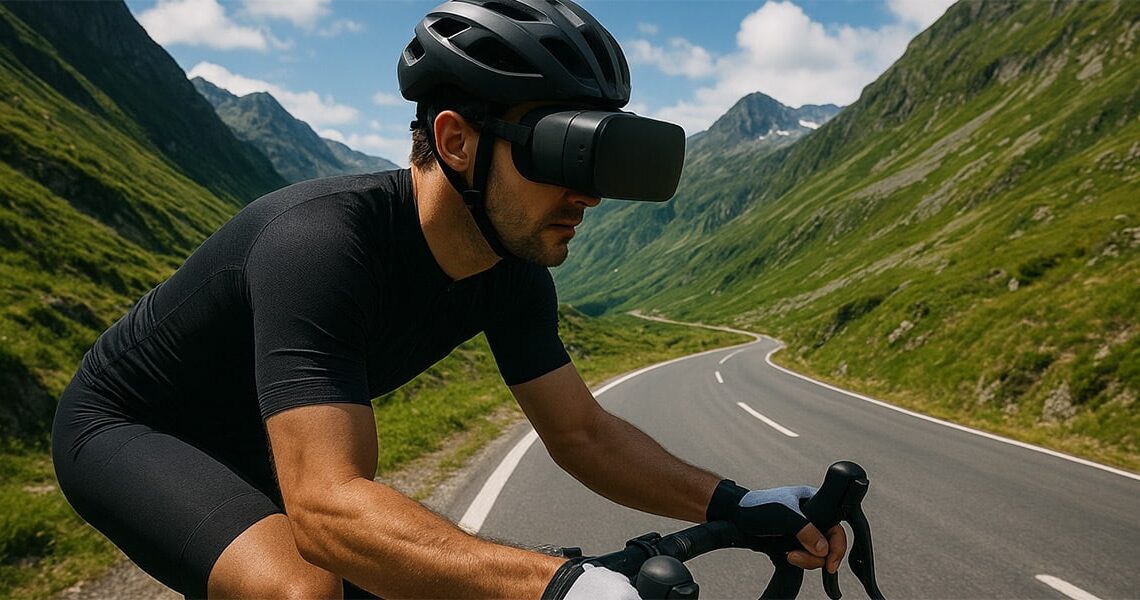
For those of us who enjoy setting aside large parts of our week to hit the open roads, the idea that VR cycling could have any sort of market is hard to fathom. Yes, the virtual world seems to be closing in around us at a lightning fast pace, but surely, the counterargument, the fresh air in your lungs, getting out into the sunlight, and maintaining a social connection with fellow cyclists goes far and beyond what any virtual world can offer?
Well, at the moment, it appears as though this is the case. Few cyclists are looking to hang up their helmets anytime soon and swap them for a VR headset. Still, with so many sectors and industries embracing swift technological change, this is one of the more evident areas where cycling could adapt to the tech-driven world we live in.
The Appeal Of VR Gaming
To understand why this is a serious question for tech experts, we must consider the profound impact of technology on the world of entertainment and sports. For instance, it was only a couple of decades ago that people laughed at the idea of online casinos being able to take a significant market share away from conventional casinos.
By the time they had established themselves as a driving force in the casino gaming market, they were quickly moving onto fresh innovations, as you can see with the Bovada site – not only do they incorporate all of the fintech advances we’re seeing in the modern world, most notably cryptocurrency casino gaming, but they have a gaming catalogue that covers all of the main staples of the casino gaming world.
This industry often acts as an experimental ground for the broader gaming world – and they’re already looking at ways to embrace the AI revolution, ranging from completely automated customer service and live dealer options, to providing 360-degree immersive experiences that mimic a conventional casino floor. It’s predicted that by 2030, 80% of customer service departments will be fully automated.
With such a remarkable shift in the status quo, VR casino gaming potentially becoming a new area of interest in the casino gaming industry and prying away some of its loyal, conventional base, could cycling end up with the same fate, where virtual, immersive cycling replaces the open road?
Making The Argument For VR Cycling
The emergence of VR cycling isn’t something that has appeared out of thin air. Over the last few years, the number of people owning exercise bikes and signing up for virtual classes has increased significantly. As money becomes virtual, with the rise of crypto memecoins, and media shifts to social and digital platforms, such as YouTube and Instagram, will cycling end up in the same category?
Despite the beauty of traditional cycling, VR or home-based machines do not carry the same risks as those we encounter on the road, such as polluted air, inexperienced drivers, or getting a puncture in a place with no signal. All of these factors, especially for cyclists who might be a bit older or more susceptible to injury, are reasons that VR cycling could establish a place for itself in the future of the industry.
Barriers For The Tech Gurus
Technologically, VR headsets are nowhere near the level they need to be to replicate the feel and sounds of being out on your bike. For many cyclists, it doesn’t matter how much this technology advances; there’s no way they’re going to stop clocking the miles on their bike. It’s routine, it’s exercise, it’s connection, and fresh air. That’s a powerful index of factors to consider.
Some experts believe that as the technology improves, and tech giants continue to drive billions of dollars worth of investment into VR, the opposite will actually happen. People will get bored with the new, latest innovations, they will put down their smartphones, and try to reconnect with their friends in physical, social settings rather than relying on technology to do absolutely everything.
The rise of dumb phones amongst Gen Z could be an early indicator that this is where the trend is heading. However, for cyclists, the question is even more pressing – will they quit their cycling clubs, stop getting fresh air, and stop getting exercise, all because they can sit at home and put a headset on and get a similar virtual experience? Well, let’s say the jury is still out.
What’s The Verdict?
While technological advances are creating so much systemic change in our society, there’s still a long way to go before VR is going to have a big enough impact in the world of cycling for it to strip away traditions that have been in place for over a century. There will be a market for VR cycling once it’s able to overcome some of the current design barriers it has, the real question is how popular it will become.
If it has potential as a large market with a younger generation, we could see a shift right across the cycling world, but as long as there are functioning roads, there will be plenty of cyclists wanting to get out and explore. Technology isn’t going to change that.
The post VR Cycling – Does It Have Legs? appeared first on PezCycling News.




